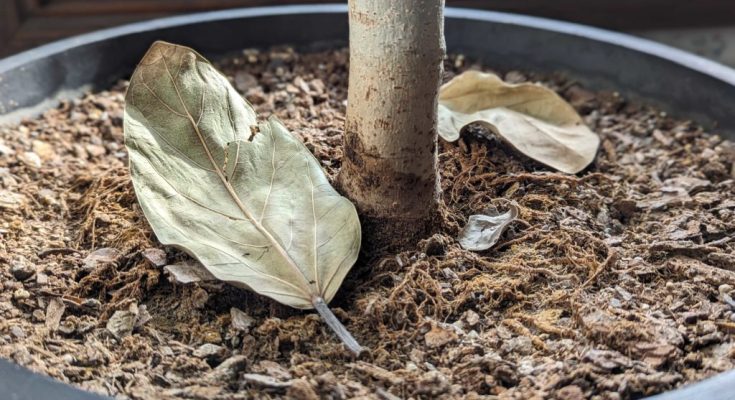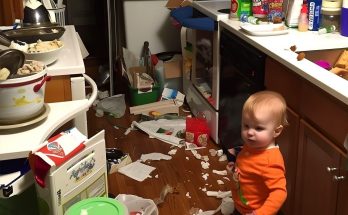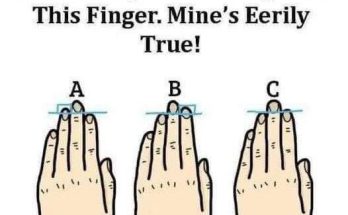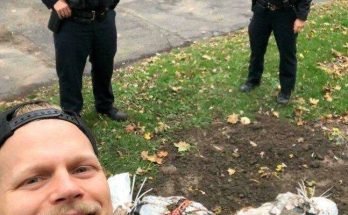If your plant is dropping leaves, there could be a few things causing the issue. The Grow-How® Team is here to help! We understand how concerning it can be when your plant is dropping leaves, so we’d love to help you work through what could be causing the issue and how you can help get your plant back on the right track. Below are some of the most common causes of leaf drop.
Possible Causes of Dropping Leaves
Watering Issues

Plants can drop leaves from watering-related stress. It is important to maintain ideal soil moisture for your plant. Finding the right balance between watering too frequently or not frequently enough is easier when you know how much of the soil should dry out for your specific plant. Check out our care guides for more specific information on what percentage of soil volume should dry out for your plant variety.
To keep your plant full and lush, water evenly all the way around the pot. Continue adding water in small amounts until it drips out the bottom of the pot into the saucer. Wait a few minutes to allow excess water to drain into the saucer. Be sure to discard water that collects in the saucer to avoid soggy soil and ‘wet feet,’ which can lead to root rot. Check out the Grow-How Team’s blog post 6 Tips To Properly Water Your Plants for some more watering how-to’s.
Too Little Light
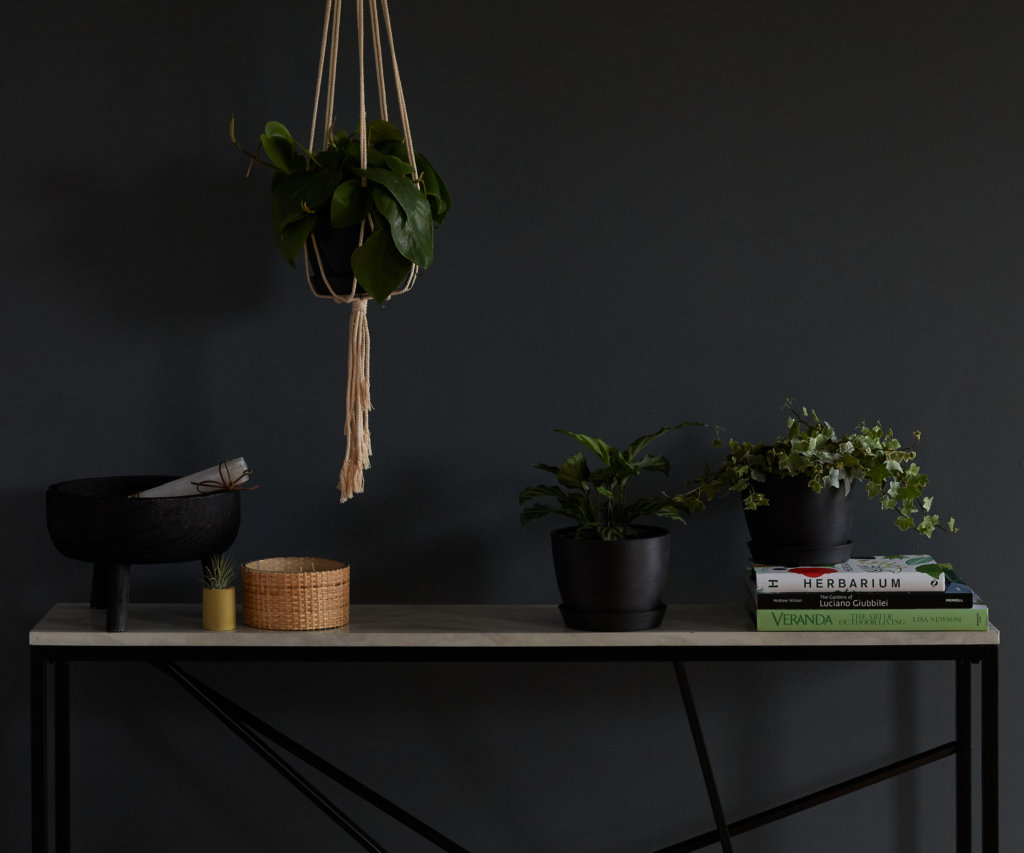
Many plants can tolerate low light areas, but if the plant is in too low of light, this can cause leaves to drop. If a plant is not getting enough light, it is not able to photosynthesize properly and might conserve its energy by getting rid of some of its leaves. Often, the plant will shed its oldest leaves first (those closest to the base of the plant).
If you suspect your plant is not getting enough light, try moving it to a spot with bright, indirect sunlight. Bright indirect light can be found next to an east-facing window or a few feet back from an unobstructed southern or western window. If the southern or western window has something like a sheer curtain, natural shade from a tree or building outside, the plant can be placed a little closer.
If your plant loves the sun, you may want to acclimate it to a spot with bright, direct light. Direct light is when your plant gets 6 or more hours of direct sun a day. You will find this kind of light next to unobstructed southern or western windows.
To learn more about indoor plant lighting, check out our lighting guide here! Our care guides detail lighting preferences for your specific plant.
Drafty Area or Low Humidity
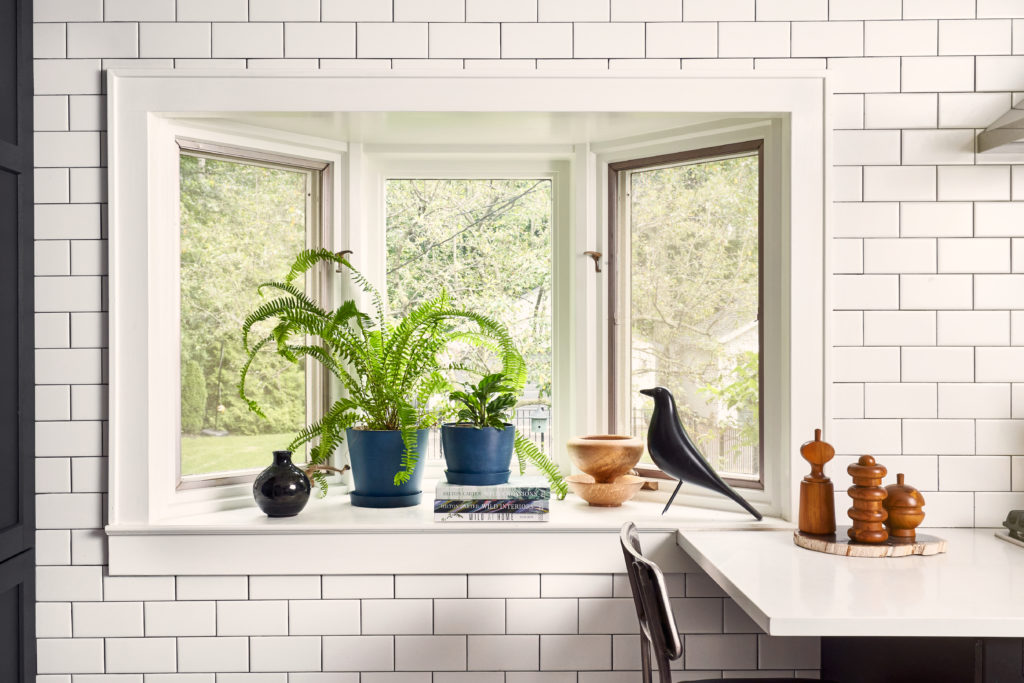
Low humidity or areas with cold drafts can encourage leaf drop. Make sure your plant is not in a drafty area, such as a drafty window in the winter, or in the direct path of any open air vents.
If your plant is a humidity lover, try giving the plant a boost of humidity by misting frequently, adding a pebble tray, or placing a humidifier nearby. You can read more about humidity in the Grow-How® Team’s blog here.
Pests
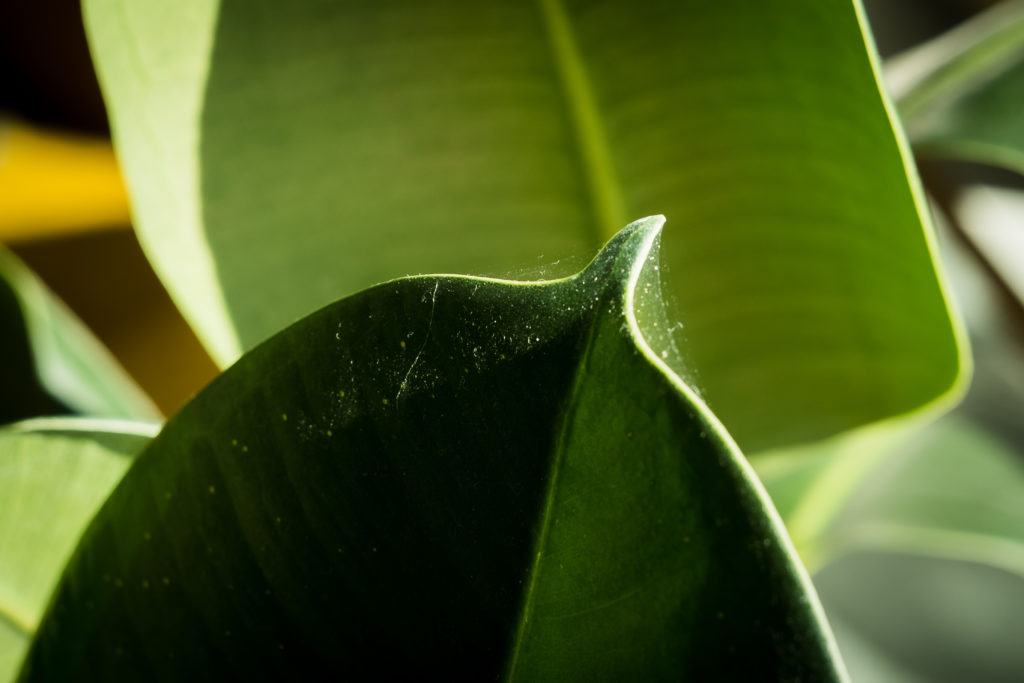
Another cause of leaves dropping could be something lurking on your plant leaves and stems — pests! Pests, such as mealybugs, scale, and spider mites could be causing your plant to drop leaves. These pests feed on the plant, which weakens the plant and can lead to discoloration of the leaves as well as leaf drop.
Keep an eye out for signs such as fine webbing, thin black dots or clusters of small white dots on the underside of the leaves, cotton-like tufts, hard bumps on the leaves or stems, and sticky residue on the leaves. If you see any of these signs, start pest treatment immediately. Many plant pests can be treated with neem oil or a spinosad treatment.
Rootbound
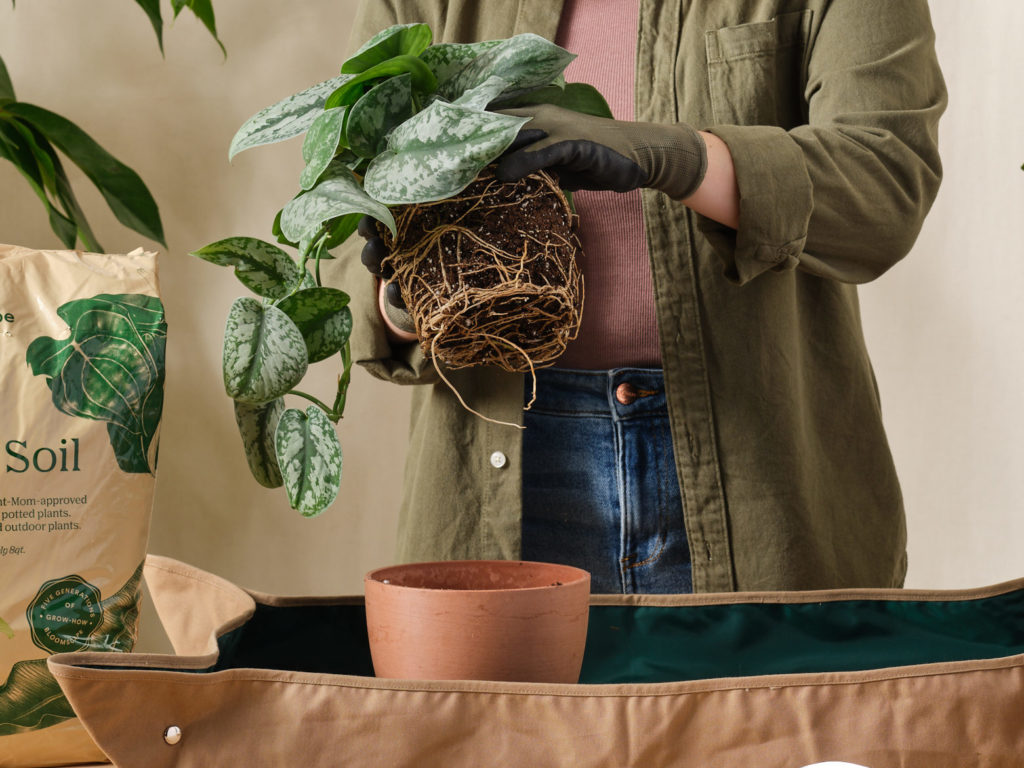
If your plant is outgrowing its current pot and becoming root bound, this could cause leaf drop. Root bound conditions can happen when the plant has grown so many roots that there is no more room to expand. This creates an imbalanced soil-to-root ratio, meaning your plant can’t access the proper amount of water and nutrients it needs. In order to conserve energy and water, the plant may respond by dropping leaves.
To tell if your plant is root bound, look for roots creeping up along the top of the soil, or see roots growing through the drainage holes at the bottom of the pot. Another sign that your plant is root bound is if when watering your plants the water rushes through the pot and out the drainage hole. You can also pull the plant out of the pot to closely inspect the roots. Read the Grow-How® Team’s blog on How to Repot Your Plants.
Shock, Stress, or Normal Leaf Drop
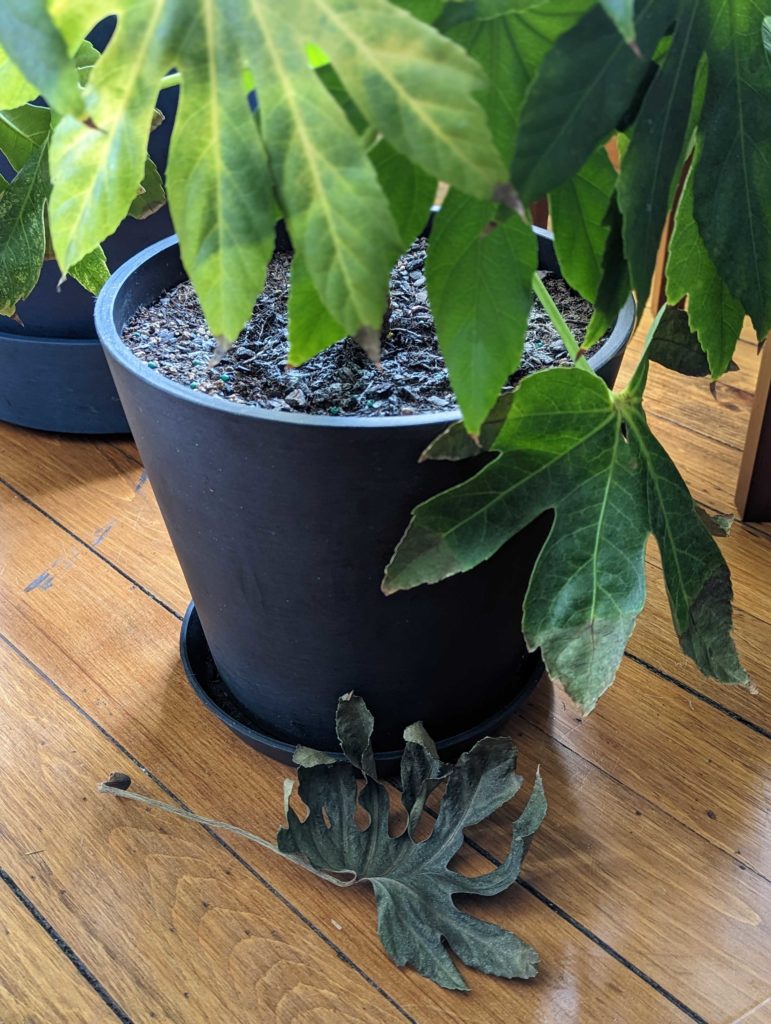
Shock and stress to the plant can cause the plant to drop some leaves. Generally, houseplants don’t like change. They can be cranky for a few days or even a few weeks after a move to a new location within your home, after repotting, or after some other stressful experience like extreme temperature changes. Usually, plants can bounce back on their own when other care requirements are met.
Another thing to consider is normal leaf drop. A few dropping leaves here and there may be normal and nothing to worry about. Plants can drop leaves as the seasons shift or when they are pushing out new growth. Your plant sheds its old leaves to send that energy to new growth! So, keep in mind that there could be nothing wrong at all.
Get Your Plant Back on Track
Your plant should be able to recover once you figure out the culprit causing the leaf drop. Sometimes, there could be a few problems to fix. Adjust your care accordingly and your plant will be back on track in no time!
When you purchase a plant from Bloomscape, you have access to free one-on-one expert advice from our Grow-How® Team throughout the life of the plant. So if you are still not sure why your plant is dropping leaves, reach out to us — our team is here to help!
